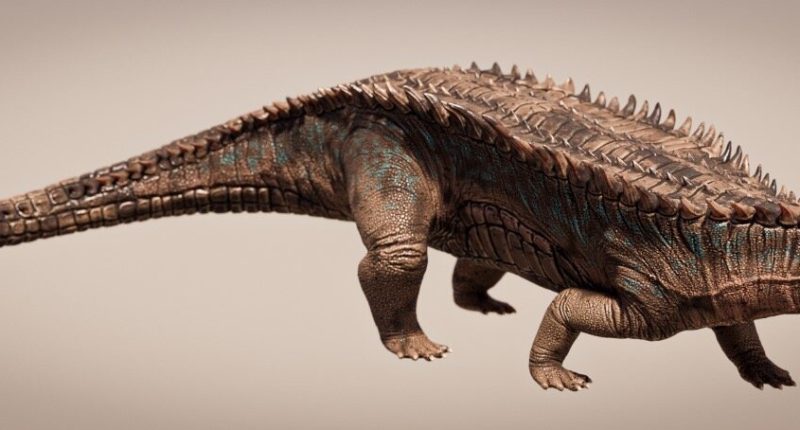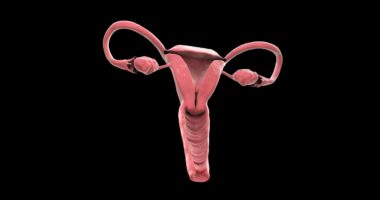AN ANCIENT crocodile-like beast known as a “tank of the Triassic” has been found with most of its armor intact.
The plated creature is part of a group known as aetosaurs that went extinct around 200 million years ago.
Fossils of aetosaurs have been found on every continent except for Australia and Antarctica.
Scientists say they “ruled the world before dinosaurs” and were notable for their heavy armor plating.
Now a new aetosaur species has been discovered after Texas scientists found a specimen with near-complete armor.
It’s been called Garzapelta muelleri, and would’ve lived around 215 million years ago.
The name comes from Garza County in northwest Texas where the specimen was discovered.
And the “pelta” in the name comes from the Latin word for shield.
Impressively the carapace – its armored suit – is 70% complete and covers all of the major regions of the aetosaur’s body.
“We have elements from the back of the neck and shoulder region all the way to the tip of the tail,” said William Reyes, of the University of Texas at Austin.
Most read in Science
“Usually, you find very limited material.”
The Garzapelta muelleri would’ve looked a lot like a modern crocodile but with more armor.
Reyes said: “Take a crocodile from modern day, and turn it into an armadillo.”
IN-CROC-IBLE!
The new aetosaur – an ancient cousin of the crocodile – would’ve been covered in bony plates that were embedded into the skin, fitting together to form a “mosaic”.
It would’ve also had curved spikes along its sides to protect the body against predators.
Unlike carnivorous crocodiles of today, the Garzapelta muelleri was likely omnivorous.
Take a crocodile from modern day, and turn it into an armadillo.
William Reyes
Interestingly, the fossil was actually discovered a while ago – but has only now been classified as a new species.
It had been stored on a shelf as part of the Texas Tech University’s fossil collections before it was spotted by Reyes on a visit.
“These specimens weren’t just dug in the field yesterday,” said aetosaur expert Bill Parker, who works as a patlaeontologist at the Petrified Forest National Park.
READ MORE SUN STORIES
“They’ve been sitting in the museum for decades and it just takes someone like Will to come along and finally decide to study them and make them come to life.”
The research was published in The Anatomical Record and was co-authored by Jeffrey Martz from the University of Houston-Downtown and Bryan Small, of the Museum of Texas Tech University.
Why did the dinosaurs die out?
Here’s what you need to know…
- The dinosaur wipe-out was a sudden mass extinction event on Earth
- It wiped out roughly three-quarters of our planet’s plant and animal species around 66million years ago
- This event marked the end of the Cretaceous period, and opened the Cenozoic Era, which we’re still in today
- Scientists generally believe that a massive comet or asteroid around 9 miles wide crashed into Earth, devastating the planet
- This impact is said to have sparked a lingering “impact winter”, severely harming plant life and the food chain that relied on it
- More recent research suggests that this impact “ignited” major volcanic activity, which also led to the wiping-out of life
- Some research has suggested that dinosaur numbers were already declining due to climate changes at the time
- But a study published in March 2019 claims that dinosaurs were likely “thriving” before the extinction event











